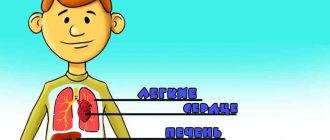Development of a physics lesson on the topic “Friction Force” (grade 10)
"Friction force"
Grade
10 Goal:
study the phenomenon of friction (its causes, patterns); create conditions for students to develop practical skills:
- friction force measurements;
- develop students' logical thinking;
- cultivate interest in the subject;
- develop an interest in problem solving.
Lesson objectives:
- Cognitive:
develop the ability to plan and conduct physical experiments, explain physical phenomena
- Developmental and educational:
to develop the ability to systematize what has been learned, to reveal the relationship between the studied theoretical material and phenomena in life, to develop the ability to interact in a group form of work.
Equipment:
computer, projector, glass plates, pipettes, sandpaper, a vessel with water, a magnifying glass, a dynamometer, a wooden block, a set of weights, a sheet of paper, round pencils, a wooden board.
Progress of the lesson.
- Org. moment. Emotional mood.
Good afternoon I am glad to see you all and wish everyone a good mood, and it starts with a smile . (an excerpt from the song “Smile” sounds)
When we smile
We heal ourselves.
And we are filled with strength,
Bestower of success.
Let's work, dear colleagues, today for the mind and soul.
- Motivation for the lesson.
Today in our lesson, we will come into contact with a great secret. Einstein said: “The most beautiful and deepest feeling achieved is the feeling of mystery, for in it is the source of true science.”
We can say about our secret: primitive people knew about it and used it for practical purposes, its first studies were carried out by the Italian scientist Leonardo da Vinci more than 500 years ago, and its laws were discovered by the French scientists Guillaume Amonton in 1699 and Charles Augustin Coulon in 1785 .
Dear colleagues, do you like to solve riddles? Guess what this riddle is about.
"What's three, three, three?" (hole)
- What do you think we are talking about? (about friction)
The topic of our lesson is “Friction Force”
The older a person gets, the less surprised he is by what happens around him:
- why does a silk lace unravel faster than a woolen one?
- why is it easier to roll a log than to drag it?
- why doesn’t a nail driven into a wall pop out?
- Why do the wheels of an empty car slip more than the wheels of a loaded car?
The purpose of our lesson is to understand all the “whys”.
Let's see how the concept of “friction” is defined by S. Ozhegov’s encyclopedic dictionary). (Lesson participants analyze the concept of “friction” by Ozhegov).
- What is the minimum number of bodies involved when we talk about friction, after analyzing all three definitions. (2 bodies)
-How these bodies should be positioned in relation to each other. (Touching)
-What phenomenon occurs between bodies? (movement)
-Friction helps movement or not? (directed opposite to movement)
3.
Assimilation of new knowledge.
Let’s correlate S. Ozhegov’s interpretation of the word “friction” with the physical concept. Find signs of friction in the definition from a physics point of view (slide 5).
-The force that arises when one body moves along the surface of another, applied to the moving body and directed against the movement.
(2 bodies, when in contact, are directed opposite to the movement).
— Why does friction force arise?
Experience
“Understanding the causes of friction.”
Let us establish 2 causes of friction and the presence or absence of similarities between the friction force and the elastic force.
Experience 1
: Take 2 glass plates, press them together, and then move one plate relative to the other. What are you observing? Why are the plates difficult to move?
Drop 2-3 drops of water onto one plate with a pipette and repeat the experiment. Why has it become even more difficult to move the plates?
Experience 2:
take 2 pieces of sandpaper and a magnifying glass. Consider the surface of these bodies. Fold them and try to move them relative to each other.
Name 2 causes of friction. (Slide 6)
Conclusions:
- surface roughness.
- Molecular interaction (according to the basic laws of MKT)
Look, do these examples show friction? (answers from colleagues).
— How is friction different in these examples? What are they doing? (skates slide, roller skates roll, stand still, that is, at rest)
—What did you call these types of friction? (static friction, sliding friction, rolling friction)
Many literary works contain physical phenomena. Using examples of poetic lines, try to see the manifestation of friction and name the type of friction.
-Let's think about whether the force of friction depends on something. Will it be the same in different forms? Where is it easier to slide: on asphalt or ice? Is it easier to move one book or a stack of books? We will answer all these questions by conducting experiments.
- What instrument can you use to measure force? (dynamometer).
Now I suggest you perform experiments in groups
Group 1. Study of the dependence of the sliding friction force on the type of rubbing surfaces.
Devices and materials:
dynamometer, tribometer, wooden block, set of weights with two hooks, sheet of paper, sheet of sandpaper.
Work order:
- Determine the value of the dynamometer scale division.
- Measure the sliding friction force of a block with two loads:
a) along the surface of the tribometer ruler;
b) on smooth paper;
c) on sandpaper.
To do this, move the block with weights evenly using a dynamometer. Write the results of sliding friction force measurements in the table.
Type of rubbing surfaces
Sliding friction force, N
Wood by wood
Wood on smooth paper
Wood on sandpaper
- CONCLUSION: friction force….. depends on the type of rubbing surfaces.
Group 2. Study of the dependence of sliding friction force on pressure
.
Devices and materials
: dynamometer, tribometer, wooden block, set of weights with two hooks.
Work order:
- Determine the value of the dynamometer scale division.
- Place a block with a large edge on the tribometer ruler, and a weight on it. Measure the sliding friction force of the block. To do this, move the block with the load evenly using a dynamometer. Write down the result of measuring the sliding friction force in your notebook.
- Place a second weight on the block and measure the sliding friction force of the block again. Write down the result of the force measurement in your notebook. Compare the data obtained.
- Place a third weight on the block and measure the sliding friction force of the block again. Write down the result of the force measurement in your notebook. Compare the data obtained.
- CONCLUSION: the greater the force pressing the body to the surface, the..... the sliding friction force.
Group 3. Comparison of sliding, rolling and body weight friction forces.
Devices and materials
: dynamometer, wooden block, set of weights with two hooks, round pencils - 2 pcs.
Work order:
- Determine the value of the dynamometer scale division.
- Measure the weight of the block with two weights using a dynamometer. Write down the measurement result in your notebook.
- Measure the maximum static friction force of the block on the table. To do this, place a block on the table, and two weights on the block. Attach a dynamometer to the block and set the block with weights in motion. Record the dynamometer reading corresponding to the beginning of the movement of the block.
- Measure the sliding friction force of a block with weights on the table. To do this, move the block with weights evenly across the table using a dynamometer. Write down the result of the force measurement in your notebook.
- Measure the frictional force of rolling the block on the table. To do this, place a block with two weights on two round pencils and move the block evenly across the table using a dynamometer. Write down the result of the force measurement in your notebook.
6. Conclusion: rolling friction….. sliding friction.
Each group talks about the results of their work.
CONCLUSIONS
-the friction force depends on the force pressing the body to the surface;
- the rolling friction force is less than the sliding friction force, at equal loads;
-friction force depends on the materials, contacting surfaces and the quality of surface treatment.
Many natural phenomena can be explained using the phenomenon of friction, animal adaptations, folk proverbs and sayings, and historical facts.
To this we can add that in the absence of friction, nails and screws would slip out of the walls, not a single thing could be held in the hands, no whirlwind would ever stop, no sound would cease, but would echo endlessly, reverberating incessantly, for example , from the walls of the room.
How to reduce friction?
- Grinding of parts of rubbing surfaces and bearings.
- Lubrication.
To increase friction, you need to:
- Increase the load (weight).
- Increase surface roughness.
positive and negative role of friction
Life experience tells us that friction is very important in our lives and plays both a positive and negative role. Let's talk about it. Every nation encapsulates its wisdom and life experience in sayings. For example:
- If you don’t grease, you won’t go;
- things went like clockwork;
- You can’t hold an eel in your hands;
- what is round rolls easily;
- skis glide through the weather;
- You cannot weave a net from waxed thread;
- the well rope grinds the frame;
- a rusty plow is cleaned only during plowing;
- a dexterous person will not slip on a melon peel;
- There is no person who has not slipped on ice at least once.
How can you use the studied phenomenon in life? Give your own examples. The phenomenon of friction is used in technology:
- to transmit motion;
- when processing metals and other materials;
- during friction welding;
- when sharpening tools;
- for fastening materials and structural parts;
- when grinding, polishing materials, etc.
Let's return to our questions.
Analyzing the examples given at the beginning of the lesson.
-why does a silk lace unravel faster than a woolen one? (thread – surface roughness, sliding friction)
- why is it easier to roll a log than to drag it? (log – rolling friction is less)
- why doesn’t a nail driven into a wall pop out? (nail – static friction)
- Why do the wheels of an empty car slip more than the wheels of a loaded car? (weight is greater when loaded)
4. Summary of the lesson.
Dear colleagues, today we examined the force of friction - A FAMILIAR BUT MYSTERIOUS FORCE, as A.A. said. Pervozvansky, which is stronger than storms, winds and bad weather. Our life is unthinkable without friction.
If there was no friction
What would happen if there were no friction? I'll tell it in a poem.
All the cars would have stopped right now, but the pedestrians would have fallen to the ground.
If the pen would not write, the house would collapse, and there would be complete destruction on Earth!
The picture would have fallen, and we would have been unable to plug the plug into the socket so easily.
And many terrible things would happen if there were no friction force on Earth.
In all the turmoil, I forgot to say that friction cannot be removed from the Earth so easily. It was, is and will always be. Long live friction! Trenyu - hooray!
5. Reflection.
Now I’ll ask each group to express their attitude towards the lesson by attaching a smiley face to the board.
Nothing great I'll take note Good

